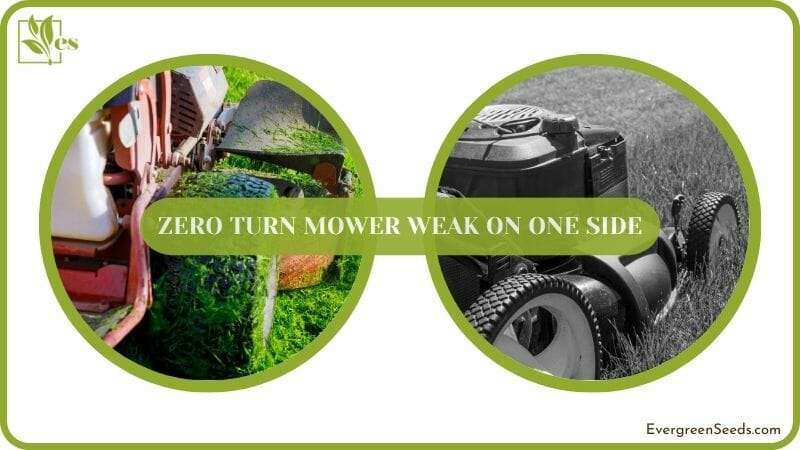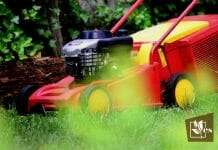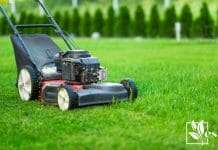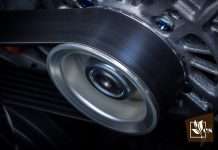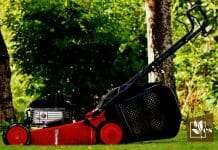- When Are Raspberries Ready to Pick: A Comprehensive Guide for Gardeners - July 11, 2024
- When Are Red Delicious Apples Ready to Pick: Essential Harvesting Tips - July 11, 2024
- When Are Snow Peas Ready to Pick: Essential Harvest Tips - July 11, 2024
Zero turn mower weak on one side usually happens for traction reasons. We will cover all the potential reasons that commonly cause zero turn mowers to feel weak on one side. Of course, it does not end with that.
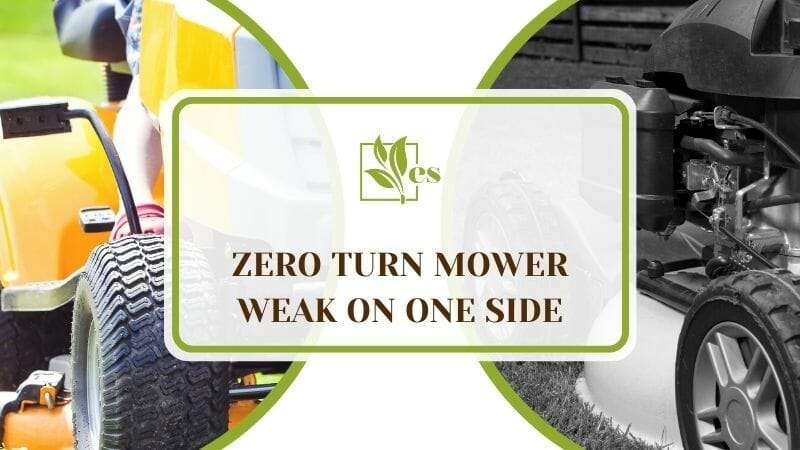
There are other potential reasons that may need to be fixed, so let’s start to discover why this happens and how you are going to fix it.
JUMP TO TOPIC
Why is My Zero Turn Mower Weak on One Side?
Your zero turn mower is weak on one side because of one or more of many reasons: traction adjustment being wrong, dragging drum brake, bad dampers, incorrect balance, tire compression does not match, or there is air trapped in the hydrostatic motor.
However, do not lose hope because these common problems with zero turn mowers are totally fixable, and, as a bonus, you can do it at home. You can also call a lawn mower expert, to be honest, depending on how severe and complicated the issue is. If you have battery issues with your mower, check out this guide.
Let us start diving into the details of why your zero turn mower is weak on one side.
1. Traction Adjustment is Incorrect
One of the zero turn mower problems is traction adjustment. Your lawn mower has throttles that control the back wheel. When these throttles are pushed forward, one wheel might transfer power more adequately than the other, which causes the lawn mower to push towards the weaker side. You will feel the machine is unbalanced.
2. One Brake is Dragging
Another possible reason why your zero turn mower is weak on one side is because the drum brakes may not be releasing as cleanly as on the other. Your mower has one drum brake on every wheel, a total of two. As you use your mower, you can get a feeling of one side dragging because of a possible problem with these drum brakes.
You can try to check if the weakening of one side is caused by a dragging brake by choking the wheels in front, disengaging the hydros, releasing the brake, or pulling up the back part of your lawn mower. After that, spin and check the wheels. The wheel that is resistant to turn is the one that is dragging.
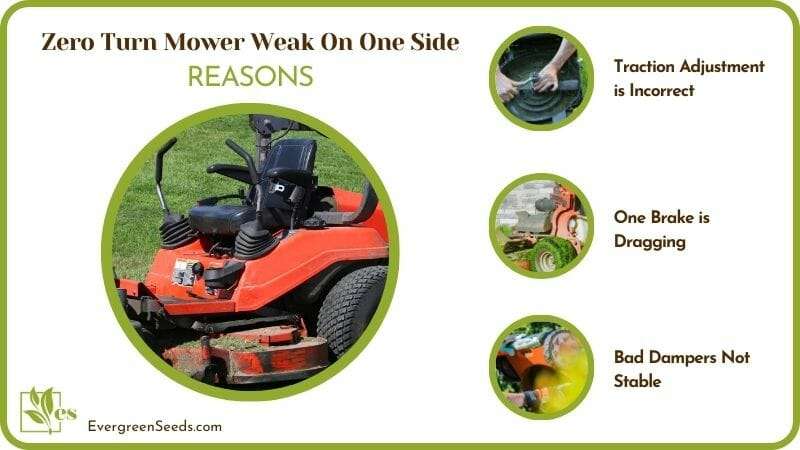
This issue can also happen because of a frozen brake caliper. The piston might get stuck inside the caliper, which results in the seizure and misalignment of the brake pads.
3. Bad Dampers Not Stable
If your zero turn steering dampers are bad, your mower will pull or lean to one side when moving forward. These dampers are responsible for maintaining the stability of your mower deck as it crosses uneven terrain.
The quality of your mower deck performance and cut quality depends on the dampers, so they must be maintained properly. If these dampers are worn out, you will notice that your deck is moving too much or the movements are jerky, and the blades have reduced cutting efficacy.
4. Balance is Not Proportioned
Your zero-turn mowers being weak on one side might be caused by the weight of the load it is carrying like garden rakes, trailers, and blowers. To make sure these loads are not the reason the mower is unbalanced, try to dismount or disconnect anything that is connected to the lawn mower, and then do a test run.
5. Tire Compression Does Not Match
Another reason why your zero-turn mower is weaker on one side is the tire compression. Tire pressure differences can cause your lawn mower to start leaning on one side. As each wheel has independent control in your hands, you can easily feel that the tire pressure of both wheels is not matched evenly.
This problem should be fixed as soon as you notice it because this can cause more severe damage if you neglect it.
6. Air Trapped in Hydrostatic Motor
Zero turn hydrostatic transmission problems happen when there is air trapped in the hydro system. This is called “cavitation.” This is very common in zero-turn transmissions where the pump – which should be full of oil – is instead filled with air. This means the pump won’t be allowed to generate the pressure needed to provide power. Make sure that no oil is coming out from your mower’s exhaust.
This can possibly occur on just one of the hydro motors of your mower, resulting in the lack of power on one side.
To help you diagnose your mower, try these steps: Drive your mower on a level surface at a low speed, and take careful note of how it feels when you increase the speed. When you increase the power and the effect becomes worse, then you can be certain that there is an airlock.
How Can I Fix My Zero Turn Mower’s Weakness on One Side?
You can fix your zero turn mower’s weakness on one side by improving traction, fixing drum brakes, replacing dampers, fixing the balance, maintaining the right tire pressure, and fixing hydrostatic issues. This will fix all the issues as mentioned previously.
It may not be as easy as you would want, but this will cost you less than having to buy a new zero-turn mower.
So, let us get to know the details and tackle them one by one.
1. Improve Traction
To improve the traction, you can try one or a few of the following: Try to reduce the tire pressure, avoid turns or quick stops, or choose bigger tires. Try not to mow on damp grass, and avoid mowing on slopes that are more than 15 degrees.
Fixing traction can be a complicated procedure, and it also depends on what specific model you own. That is why it should be entrusted to an expert.
2. Fix the Drum Brakes
To fix the drum brakes easily, gather all the tools needed: wheel chocks, a jack, a pair of pliers, a wheel wrench, a brake shoe kit, a screwdriver, and a socket wrench with extension. Get your mower on a flat surface.
Once done, start by detaching the spark plug, chocking the wheels in the front to prevent your mower from moving, and making sure that the brake was released to park.
Once done, you can follow these steps:
- First, loosen the wheel’s center nut or the fastener that grips the hub using a wrench. Next, lift up the back part of the mower until the wheels are up to the ground for a couple of inches. Using a wheel wrench, remove the bolts or nuts that hold the wheel. Remove the nut on the hub, and detach the hub. Take note that you will have to exert some effort here.
- As you remove the wheel, you can see two shoes, one adjustment screw, and two springs. Inspect and assess the brake shoes. If those were tugging, then there is probably a potential problem. However, the shoes might be worn out and cannot be saved if either of them malfunctioned or if the brake was adjusted tightly.
- The next step is to take out the brakes by removing the springs that are connecting the shoes. You can use a pair of pliers to remove them and then set them aside. Once the springs are removed, grab the shoes, and set them aside as well.
- Now, you can grab the replacement brake shoes, place them on your zero-turn mower, and remember that each side has specific shoes. Once the shoes are in the right position, you can now bring back the screw between the shoes, and reinstall everything on the wheel hub. Inspect the wheel by giving it a spin to check if it’s still hard to turn. If the hub spins freely, it means the brake was installed properly.
- The next step is to grab the wheel and bolt it back to the lawn mower. Make sure to tighten and secure the nuts or bolts by firmly using a wrench, and ensure everything was installed correctly in its position.
- The last step is the brake adjustment. Look for the hole where the adjuster screw for the shoe can be adjusted. You can find across the hub. Remember to tighten it just right because over-tightening may lead to another dragging brake problem that you do not like.
3. Replace the Dampers
Stop your deck from moving too much because of worn-out dampers simply by replacing them with new ones. In doing this, you may want to change the springs as well because there are times when the new dampers are not automatically pushing back the steering arms.
4. Fix the Balance
To fix this issue, remove everything that is attached to the lawn mower and have a test run. Once you are sure the heavy loads and attachment are the problems, then prevent these from happening again by not putting your mower under too much strain.
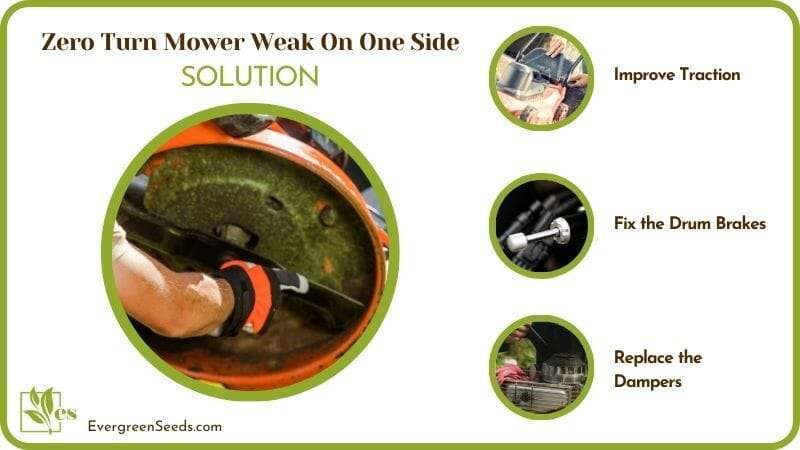
However, if there are attachments that are designed together with your mower, such as a grass collection system, monitor it regularly to avoid putting up too much weight on your mower.
You might also want to check the clipping distribution, and if you encounter a problem with this, you should call the supplier for a repair.
5. Maintain the Right Tire Pressure
Avoid the one side weakening of your zero-turn lawn mower by filling up each tire with the proper pressure. Check the recommended tire pressure based on the product’s manual, and be sure to maintain it.
6. Fix Hydrostatic Issues
To fix your mower’s hydrostatic issue, prepare the tools needed: wheel chocks, hydro fluid, and a jack. Now, you can follow these steps:
- You will need to chock the front wheels and lift up the rear wheels for a couple of inches off the ground. Look for the hydro engagement rod, which you can find on the back part of your lawn mower. Push or pull the rods to disconnect the drives. After doing that, ride your mower to turn over the engine. Now, escalate the throttle up to the maximum RPM.
- Engage a forward drive, reach for its maximum, and hold onto it for almost a minute. If the wheels will not spin when you execute reverse or forward drive, then you will confirm that the hydros were disengaged correctly. If this is the case, turn off your mower and disconnect the hydros properly. Now you may want to try applying reverse drive this time and hold again for almost a minute. Allow the hydrostatic to bleed, and withdraw the air that was trapped in the motors. Once you are done, you can now turn the engine off.
- The next step is to put the mower down and re-engage. Allow the mower to revert to the ground. Put in the brake with the engagement rod, engage the hydros, and unfasten the wheel chocks. Now, check the fluid levels on your hydro, and fill it with hydro fluid if it is low. However, if you have a model with sealed hydros, disregard this part. Lastly, do a trial run for your mower, and you should see immediate improvement.
